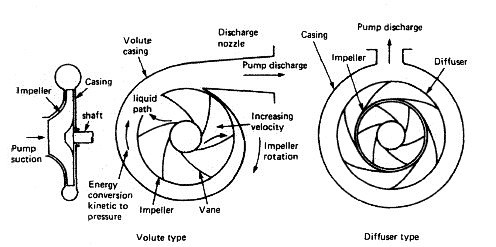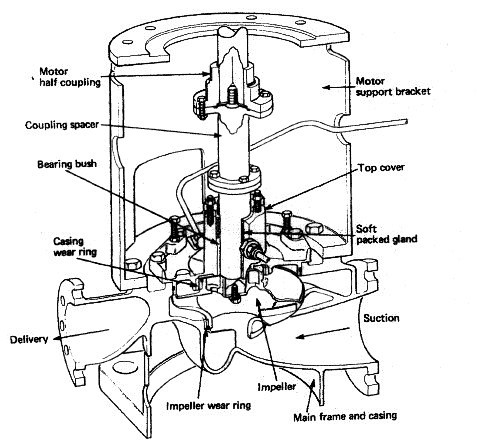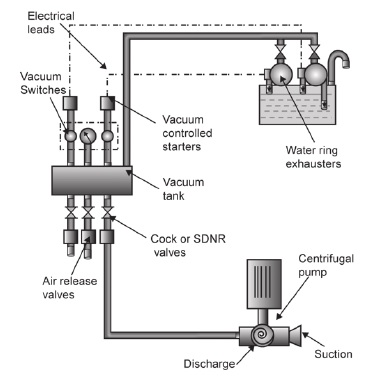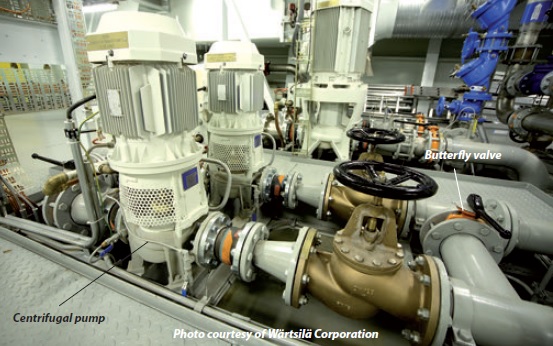
Centrifugal Pumps & Pumping Elements for General Marine Duties
A pump is a machine used to raise liquids from a low point to a high
point. In a centrifugal pump liquid enters the centre or eye of the impeller and
flows radially out between the vanes, its velocity being increased by the
impeller rotation. A diffuser or volute is then used to convert most of the
kinetic energy in the liquid into pressure.








